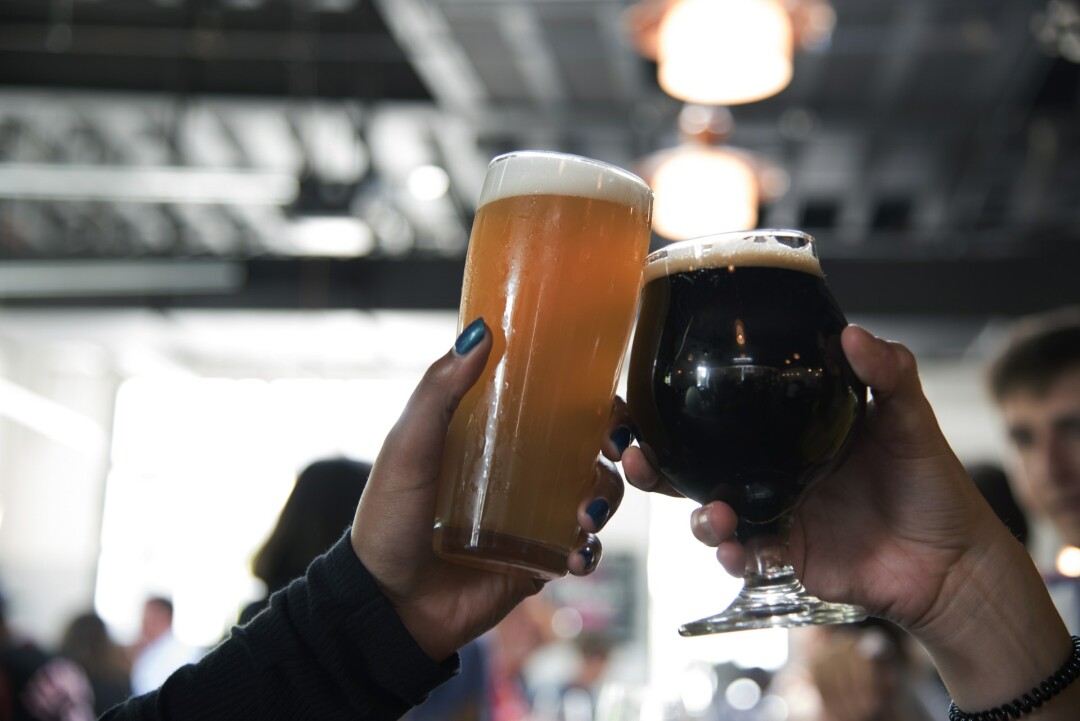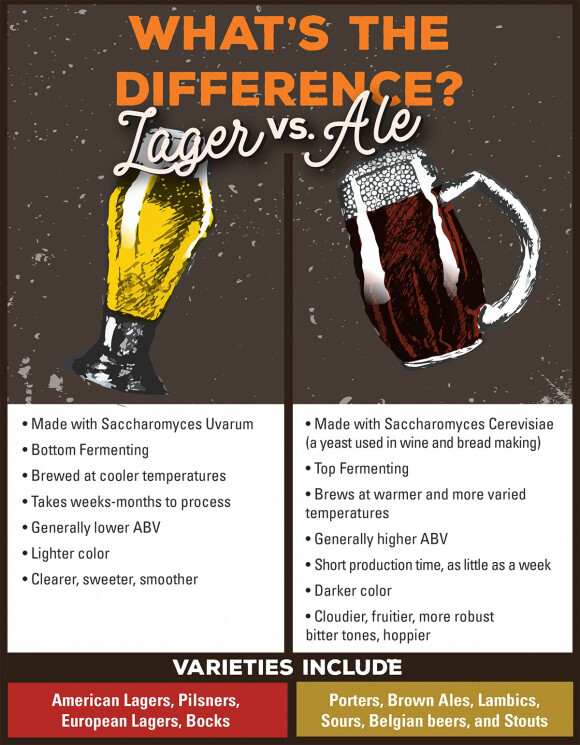The Basics of Beer
lagers, ales, and everything you need to know about your typical cold one

Wisconsin is a beer-loving state, for better or for worse, and with history older than Leinenkugel’s and new breweries coming up every year, the Chippewa Valley is definitely a hub within a hub. With a culture a sudsy as ours, it’s not uncommon to find oneself chatting among a group of beer aficionados, safe-bet Spotted Cow in hand, lost as they pontificate about the clarity, mouth-feel, and hop-iness of their micro-brewed preferences.
Beer brewing is an art, with an infinite gradient of product. It takes years of learning, experimentation, and practice for brewers to become proficient in only a few techniques. Zach Barker, sales and marketing manager of the soon-to-open Zymergy Brewery in Menomonie, compares it to baking a cake. The main ingredients might be the same, but the flavors, baking methods, and toppings are always going to be different. So while we can’t help you go from Bud to Brewmaster in the space of a few hundred words, we can give you an intro to beer that will help you hold your own when the discussion gets hoppin’.
Beer as we know it was developed in the 12th century in Europe. Humans had been brewing drinks made of malted barley for millenia beforehand, but it was at this point German monks began using wild hops as a balancing flavor for the sweetness that resulted from fermentation. Hops also act as a preservative, allowing the finished product to be stored for longer periods of time. The use of hops caught on throughout Europe, resulting in a beverage much closer to what we know now.
Beer was a staple in medieval diets, in part because of its nutritional “oomph,” and in part because it was a safe alternative to drinking water, which was often contaminated by various kinds of waste.
The main ingredients in any beer are water, barley, hops, and yeast. Brewers begin by grinding the grains into small pieces. Then they are wet and mixed into a vessel with warm water, which, with the help of natural enzymes, converts the grain’s starches to sugars. The next step is to separate the resulting, sweet liquid from the grain husks. The liquid, called the wort, is brought to a boil, and hops are added to the mix to add bitterness.
The wort is separated a second time, removing all of the grain and hops particles. Then, brewers add yeast, which causes fermentation by converting the sugars to alcohol. After fermentation, the beer is aged to ensure smoothness and proper flavor development.
The flavor of a given beer will depend on the ratios of those ingredients, the addition of other ingredients such as other grains, fruits, spices, and more, and the brewing process itself. Most beers fall under two categories: Ales and Lagers. From there, it’s a free-for-all.

Lagers
Lagers are made with a variety of yeast called Saccharomyces Uvarum, which is a “bottom fermenting” yeast. This means that the fermentation process takes place below the surface of the brew. Lagers can ferment at temperatures as low as 48 degrees Fahrenheit, which results in a crisp, clean flavor. These brews take weeks, or even months to produce. The yeast doesn’t produce as much alcohol during the fermentation process, so lagers usually have a lower alcohol content than ales.
“There’s something smooth and crisp and traditional about them,” Barker said. These flavor elements tend to draw older drinkers to choose Lagers.
Varieties include: American Lagers, Pilsners, European Lagers, Bocks.
Ales
“Ales are a little easier,” Barker said. They use a top-fermenting yeast called Saccharomyces Cerevisiae. As you can probably guess, this variety floats to the top of the brew during fermentation, sinking into the depths toward the end of the process. Ales aren’t as cold-hardy as lagers, which means they must be brewed at higher temperatures. But, the process takes only a few weeks, and because the yeast strain is more alcohol-tolerant, yields are usually higher ABV than lagers. Ales are darker, cloudier, and often fruitier with more robust bitter tones.
Ales make up the majority of Chippewa Valley-made beers, in good part because of their quick turnaround time. It allows smaller-scale operations to produce enough product to meet the demands of local customers, and experiment with new, exciting recipes on a shorter timeline. “Young kids like ales because they’re all over the board and you can find whatever flavor, variety,” Barker said.
Varieties include: Porters, Brown Ales, Lambics and Sours, Belgian beers, and Stouts.
•••
“When you look at a lot of craft brewers now, a lot of it is about turnover because you only have so much equipment,” Barker said. “So, Budweiser is a lager. Very good for them, they have all the money they can spend the time doing that where, if Brewing Projekt was doing that, their turnover would be so much slower.”
You kind of have two styles, in a sense, of the craft brewery business right now,” Barker continued. “You have a lot of people doing traditional beer, and what’s kind of been popular.” Others, he said, are “chasing trends and experimenting, almost like a chef. Doing some crazy things to see what they can come up with.”
With new brews to choose from popping up with growing frequency, it’s a great time to explore Chippewa Valley varieties. Use your new understanding of Wisconsin’s favorite centuries-old beverage to order with confidence at a taphouse, and explain your findings to your friends!

